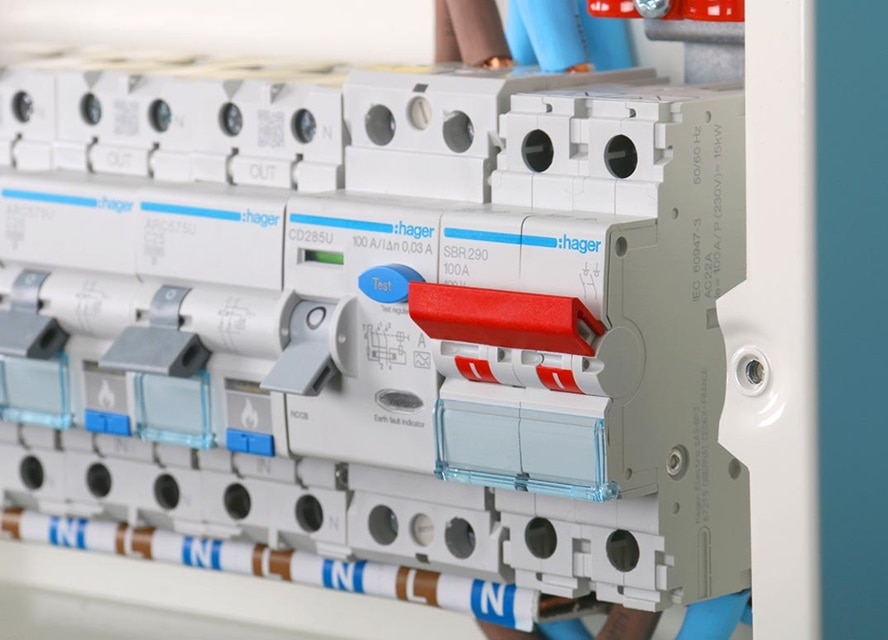Ask the Expert: RCDs
The transition in the wake of the 18th Edition of the IET Wiring Regulations, is in effect. In order to support electrical contractors through the changes regarding RCDs we asked our technical and training manager Paul Collins key questions regarding RCDs.

Your Questions Answered | Hager RCDs
The mandatory introduction of 18th Edition of the IET Wiring Regulations is now only a matter of weeks away. In order to support electrical contractors as they get used to the imminent changes, our industry-leading chatbot ‘Reg’ has owned the role as the go-to expert, actively answering a wide variety of queries from electricians keen to be fully prepared for 1st January 2019.
One particular area that has prompted a large number of questions has surrounded RCD selection in an effort to comply with the new changes going forward. Paul Collins, Technical and Training Manager, summarises some of the most frequently asked questions we have received in relation to RCDs - an important section that has been completely revised as part of the 18th Edition overhaul. He also includes reference to a common query concerning RCCBs and switches.
What has changed regarding RCDs?
The new regulations covering RCD technology selection have been completely revised and set out a requirement for specifiers to select the appropriate RCD from the range of four types available. RCDs can prevent fatal electric shocks and is a generic term that covers a range of products, including RCCB, RCBO, SRCD, FCURCD, CBR and MRCD. RCDS offer a level of personal protection that ordinary fuses and circuit-breakers cannot provide.
What type of RCD should I use?
RCD use has been in existence for a long time and the new regulations have clarified their selection and specification in order to further enhance safety standards. Electrical contractors need to carefully consider the type of RCD required depending on the type of equipment which may be connected in the installation. It is helpful to remind installers what each of the four types of RCD is able to detect so that appropriate product specification can be made.
Type A RCD
A type A RCD is able to detect alternating sinusoidal residual current and residual pulsating direct current suddenly applied or smoothly increasing.
Type B RCD
A type B RCD is able to detect and respond to all types of residual current including smooth DC residual current.
Type AC RCD
Type AC RCD is able to detect and respond to AC sinusoidal residual current only.
Type F RCD
A type F RCD is able to detect and respond to high-frequency residual current as well as pulsating DC residual current.
What is the change to overload protection of RCCBs and switches?
Diversity can no longer be used to assume overload protection of RCCBs and switches. The simplest way of ensuring that a consumer unit conforms is to make sure that all RCCBs and switches are rated at or above the rating of the upstream protection i.e. if the cut-out fuse is rated at 100Amps all switches and RCCBs within the board should also be 100Amps.
Alternatively, contractors can ensure that the sum of the current rating of the downstream loads is less than or equal to the rating of the RCCBs or switches.
To see the original article head to electricalcontractingnews.com

Commercial Distribution Catalogue
Included in our catalogue are solutions for both commercial and industrial sectors as well as information about our Hybrid Invicta 3 TP&N boards, Panelboards, Plug-in Metering and more.
Have any questions or concerns? Send us a tweet and we will get back to you right away! Our twitter channel promotes the latest product information, links to our catalogues and brochures, and hosts several competitions through out the year.
